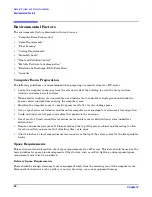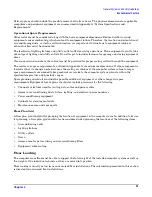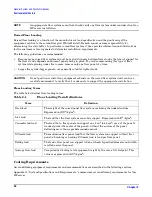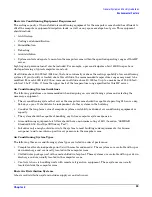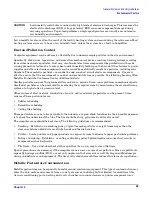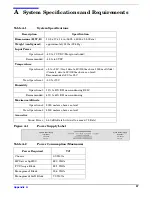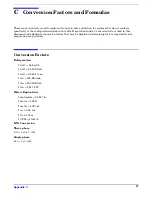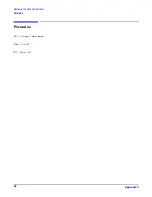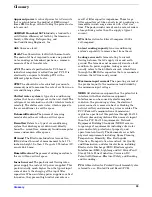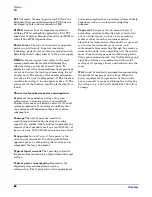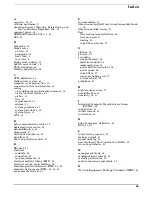
Glossary
PCI
Glossary
44
44
PCI
Currently, the most popular local I/O bus, the
Peripheral Component Interconnect (PCI) bus was
developed by Intel and introduced in 1993.
PICMG
A consortium of companies involved in
utilizing PCI for embedded applications. The PCI
Industrial Computer Manufacturers Group (PICMG)
controls the PICMG specification.
Power factor
The ratio of true power to apparent
power in an AC circuit. In power conversion
technology, power factor is used in conjunction with
describing the AC input current to the power supply.
RMS
Root-mean-square (rms) refers to the most
common mathematical method of defining the
effective voltage or current of an AC wave. To
determine rms value, three mathematical operations
are carried out on the function representing the AC
waveform: (1) The square of the waveform function
(usually a sine wave) is determined. (2) The function
resulting from step (1) is averaged over time. (3) The
square root of the function resulting from step (2) is
found.
Theoretical maximum power consumption
Represents the maximum wattage of a given
configuration, assuming worst-case conditions
(thermal tolerances, workloads, and so forth) on all
system components. It is extremely unlikely that
any customer will experience this level of power
consumption.
Tonnage
The unit of measure used in air
conditioning to describe the heating or cooling
capacity of a system. One ton of heat represents the
amount of heat needed to melt one ton (2000 lbs.) of
ice in one hour. 12,000 Btu/hr equals one ton of heat.
True power
In an AC circuit, true power is the
actual power consumed. It is distinguished from
apparent power by eliminating the reactive power
component that may be present.
Typical input current
The operating current of
the product measured using a typical load and target
voltage.
Typical power consumption
Represents the
expected power consumption of a given
configuration. The typical value is the approximate
power consumption that a customer will most likely
experience and can use for power budgeting
purposes.
Vapor seal
A vapor seal is an essential part of
preventing moisture infiltration into or migration
out of a critical space, such as a data processing
center or other room that contains sensitive
electronic instrumentation. Essentially, a vapor seal
is a barrier that prevents air, moisture, and
contaminants from migrating through tiny cracks or
pores in the walls, floor, and ceiling into the critical
space. Vapor barriers may be created using plastic
film, vapor-retardant paint, vinyl wall coverings and
vinyl floor systems, in combination with careful
sealing of all openings (doors and windows) into the
room.
Watt
A unit of electricity consumption representing
the product of amperage and voltage. When the
power requirement of a product is listed in watts,
you can convert to amps by dividing the wattage by
the voltage. (e.g., 1200 watts divided by 120 volts is
10 amps.

